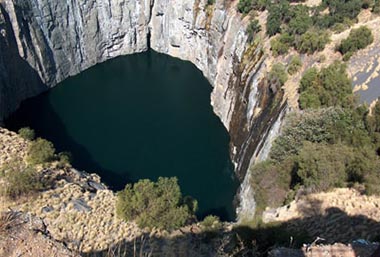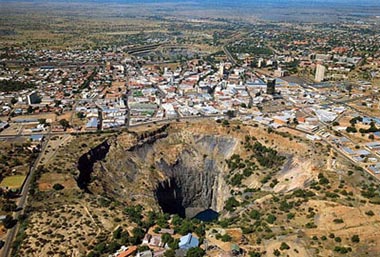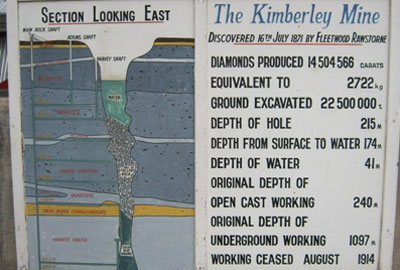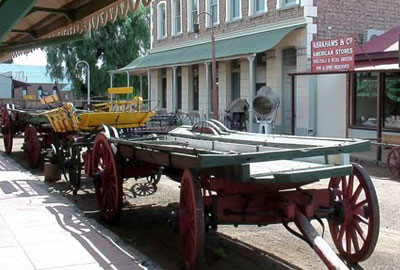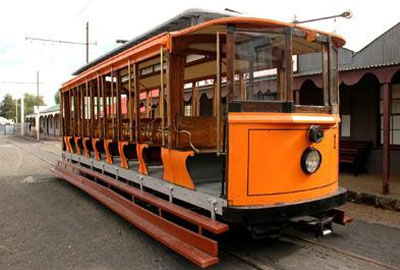The Big Hole and Kimberley’s Diamond Museum
Kimberley is known for the being the site of one of the biggest diamond rushes in the world. The incredible story first started in 1866. Erasmus Jacobs discovered a white pebble at the Orange River near Hopetown. The pebble was no ordinary stone. It was, in fact, a rough diamond that measured in at an impressive 21.25 carats. After the diamond was sent to London, another two were discovered in the region, prompting the arrival of thousands of miners from all over the world.
In 1871, a larger diamond was found at Colesberg Kopje at 83.50 carats. The hill became the site of a massive mine as the townsfolk and diamond companies mined for more diamonds. The hill soon became a huge hole, later known as the “Big Hole,” as it is still known today. Because of the Big Hole, a town formed around it as more people gravitated toward it in search of diamonds. The new town became Kimberley, named on 5 June 1873.
The name, Kimberley, originated from where the diamonds formed; in kimberlite pipes. During the exciting diamond rush, five enormous holes were dug along these pipes; the biggest of which was the Kimberley Mine. It closed in 1914, by then covering an area of 170,000 square metres and was 1,097 metres deep. However, the massive mine had been able to yield around 3 tons of diamonds. The Big Hole is the largest man-made hole on Earth and the largest hand-dug excavation in the world. Without the Big Hole, De Beers Consolidated Mines Limited, one of the biggest diamond mining companies in the world, would never have been formed. The Big Hole is 215 metres deep, has a surface area of 17 hectares and covers a perimeter of 1.6 kilometres.
Today, the Big Hole has been transformed into a fun and interactive tourist experience. Learn all about the story of diamonds from the first one discovered- the “Eureka” – to the end of the rush in 1914. First, visitors to the Big Hole can travel underground in a recreation of a mine shaft. A fifteen-minute film is the played that explains the history of diamonds in Kimberley. After the film, guests can peruse over the ancient artefacts, photographs and archived material.
Next to the Big Hole is the Kimberley Mine Museum, which is a well-preserved legacy of the town’s yesteryear either reconstructed or restored to their original glory. Notable highlights of the Mine Museum include:
- A house dating back to 1877
- The tobacconist where Perilly made his famous hand-rolled cigarettes
- Barney Barnato’s boxing academy
- A traditional pub, “Digger’s Rest”
- A skittle alley
- Mock diamond diggings
- De Beers railway coach
- A reconstruction of the famous De Beers homestead.
Within the De Beers Hall, you will be able to be fascinated by the jewellery and uncut diamond exhibition, including the largest uncut diamond in the world; the 616, named for its carat size. Enjoy a trip into the past by visiting these slices of South African history and culture.
Images:
http://static.panoramio.com/photos/large/3535385.jpg- www.panoramio.com
www.angryboar.com
www.amazingplacesonearth.com
www.flickr.com
www.panoramio.com

